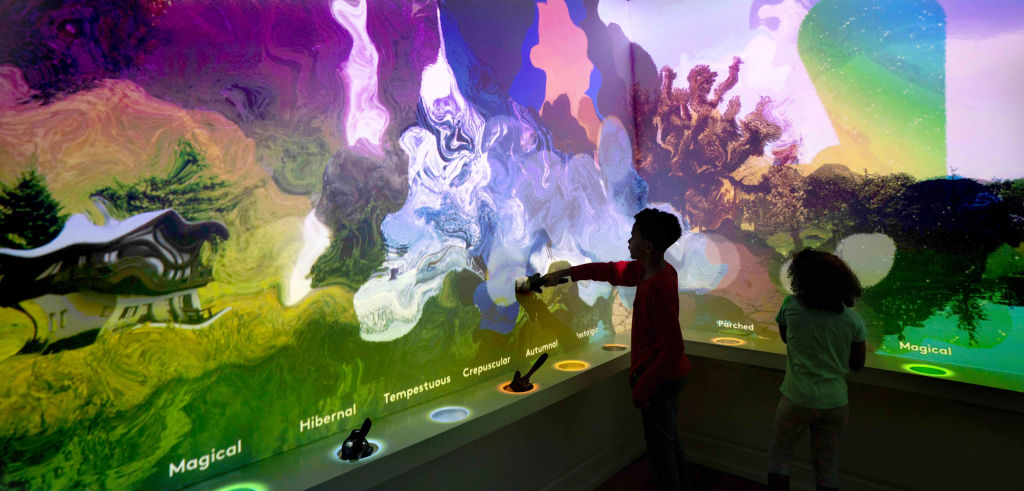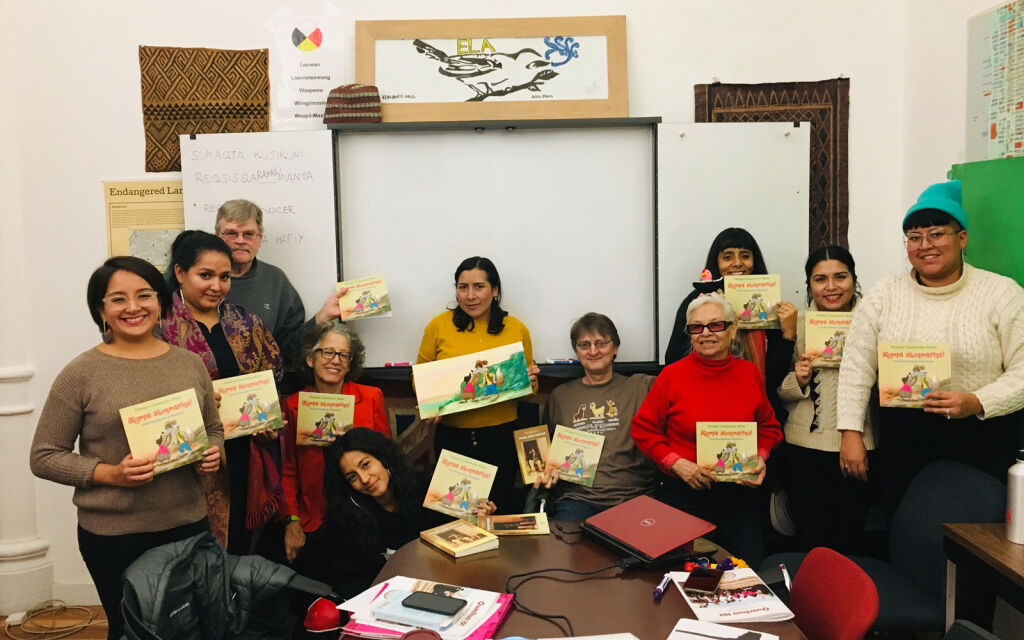Linguistic Diversity in the District and the “D.C. Dialect”: Q&A with Natalie Schilling
Is the word “moe” in your vocabulary? How about “jhi”? If so, you’re likely a D.C. local! Like go-go and mambo sauce, these words are part of the lifeblood of Washington, D.C., culture, which most visitors only get a taste of in between excursions to the city’s many historic landmarks and museums. Since 2006, Georgetown University’s Language and Communication in Washington, D.C., (LCDC) project, co-founded by Natalie Schilling, has been dedicated to learning more about the “D.C. dialect” and language used in and around D.C. By speaking with local communities and conducting surveys and interviews, they hope to better understand the region’s cultural and linguistic diversity and give focus to historically understudied communities and language varieties.
Q: What makes Washington, D.C., such an interesting place to study linguistic diversity?
A: D.C. is located at the intersection of several large dialect areas identified in the definitive Atlas of North American English — the North, Mid-Atlantic, and South — and our researchers explore the extent to which D.C.-area speech exhibits characteristics of these different varieties. It’s also interesting to study in terms of language and dialect contact: D.C. isn’t just for temporary residents who come and go with changing political tides. It’s also home to longstanding populations with different languages and dialects, for example of African Americans, as well as newer groups from an array of US areas and other countries. Two populations of note in that regard are immigrants from El Salvador and Ethiopia.
Researchers on the LCDC project are also keenly interested in issues of language and identity: How does language reflect and shape people’s senses of community belonging, including communities based on factors like ethnicity and socioeconomic status as well as practice-based identities like religious congregations and issues-based activist groups? We’re also concerned with how language and dialect change intersect with sociocultural and socioeconomic change in D.C., especially the interrelation between language variation and the gentrification that has increasingly transformed the city over the past several decades. Finally, we explore how D.C. residents talk about language and identity: What do they think of local dialects, what do they see as important features of ‘D.C. Speak,’ and what do they think constitutes an authentic identity as a D.C. native?
Q: How do you define the “D.C. dialect,” and what are some of its main characteristics?
A: As with any large urban area, it’s difficult to talk about THE dialect, since there’s so much linguistic diversity within D.C. Given the importance of African Americans in the D.C. linguistic and cultural landscape, many people equate the D.C. dialect with D.C. African American Language (AAL). Even if we focus in on this variety, our research has revealed a rich array of variation within D.C. AAL. For example, people from different D.C. neighborhoods and in different types of professions use language in different ways. And, as with all of us, D.C. residents vary the ways they talk from situation to situation, for example, in a professional business setting vs. at a casual weekend gathering with family and friends.
Q: We feature several local words like “moe” and “jhi” in the museum. What are some other words that originated in or are unique to the D.C. area?
A: Below is a list of a few D.C. words. It’s important to remember that dialect features can be found not only in vocabulary (or lexicon) but also in terms of pronunciations (accent features) and grammar. For example, a feature of D.C. AAL that people often comment on is the pronunciation of words like ‘Maryland’ and ‘carry-out’ as something like ‘Murraland’ and ‘curry-out.’ It’s also important to understand that while all dialects are unique, they can still share some features with other dialects: You’re likely to hear ‘Murraland’ in Baltimore, not just D.C.; and the word ‘jont’ has a Philadelphia variant, ‘jawn.’
- Bama/bamma — noun. Someone who doesn’t know how to dress or act; country; out of style; someone who can’t dress or is uncool
- Jont — noun. A place; a word used to describe something (ex. referring to a car: “That jont is fast”; a thing/ anything
- Lunchin — Tripping; Off one’s rocker; Something crazy; Acting a fool
- Siced — adj. Hyped up; Instigating; Excited/ pumped/ ready to go; Happy
- Vicious — adj. Bad in a good way, referring to looks, food, experience of any kind; good; cool
- Wellin’ — Telling a lie
Q: How is the D.C. dialect being impacted by changing city demographics and gentrification?
A: As just noted, there’s really no such thing as THE D.C. dialect, since there’s so much variation within D.C., by ethnicity, social class, neighborhood, gender, age, speech situation, etc., etc. However, our research team has found that as D.C. is increasingly impacted by the speech of gentrifiers coming in from outside areas, some groups of D.C. residents are using fewer features of local ‘D.C. Speak’ such as ‘r-less’ pronunciations (as in ‘sistuh’ for ‘sister’) and the pronunciation of words like ‘time’ and ‘tide’ as ‘tam’ and ‘tad.’ It tends to be more common for women than men to move away from using local D.C. features toward other language norms; in addition, people in certain D.C. neighborhoods like the iconic Southeast tend to hold onto local features more so than people in other parts of the city.
Q: Washington, D.C., has a large Deaf community thanks in part to the presence of Gallaudet University. Can you say anything about the impact or presence of signed languages like American Sign Language (ASL) in the district?
A: The linguistic and sociolinguistic study of Washington, D.C., is greatly enriched by Gallaudet University researchers, and the linguistic landscape of the city is made much richer through incorporation of signed as well as spoken languages and dialects. Sociolinguistic study of signed languages shows that the same types of social factors that influence spoken dialects also impact variation in signed languages. For example, just as African Americans have developed a linguistically distinctive and culturally important dialect of spoken English, so too is there a distinctive Black American Sign Language that serves as an important signal of community belonging for Deaf African Americans. We highly recommend the book The Hidden Treasure of Black ASL, by Carolyn McCaskill, Ceil Lucas, Robert Bayley, and Joseph Hill, as well as the film Signing Black in America: The Story of Black ASL, produced by the Language and Life Project at North Carolina State University, for more on this vibrant language variety and its rich history.
Q: In addition to recording how Washingtonians talk, this project also records what Washingtonians talk about. What are some notable topics or memorable stories you’ve encountered in the project?
A: Contrary to popular belief, Washingtonians talk about a lot more than politics! People have shared a rich array of stories with us, including stories about momentous events like the 1963 March on Washington, the 1968 riots following the assassination of Dr. Martin Luther King, Jr., and September 11, when the Pentagon was attacked. They also share tales from daily life and talk about D.C. traditions and cultural icons like mambo sauce and go-go dancing. D.C. residents also often talk about gentrification and other changes the city has seen, and everyone has tales about transportation woes!
Q: Are there any resources you would like to share with people who want to help LCDC or are interested in learning more about language in D.C.?
A: The LCDC project has ties to the Corpus of African American Language (CORAAL) project housed at the University of Oregon. This corpus is accessible to the public and to researchers seeking data for the continuing study of AAL. The corpus includes two sub-collections featuring interviews with residents of D.C., one from 1968 and the other from the early 21st century.
People may also be interested in the special edition of the journal American Speech dedicated to the CORAAL project. This issue includes a chapter I co-authored with Charlie Farrington on AAL in the nation’s capital, including discussion of its historical development and a list of studies that have been conducted on D.C. AAL.
The LCDC project was begun by Professors Deborah Schiffrin and Natalie Schilling in the Georgetown University Linguistics Department in 2006 as an umbrella under which students in Sociolinguistic Field Methods classes could conduct research as part of their graduate training. The project was intended to begin addressing the fact that little systematic sociolinguistic research had been conducted in D.C., despite its rich diversity of dialects and languages, as well as its importance as a historical and current center of African American language and culture in the U.S. — and despite the central importance of Georgetown in the development of sociolinguistics as a field of study.



